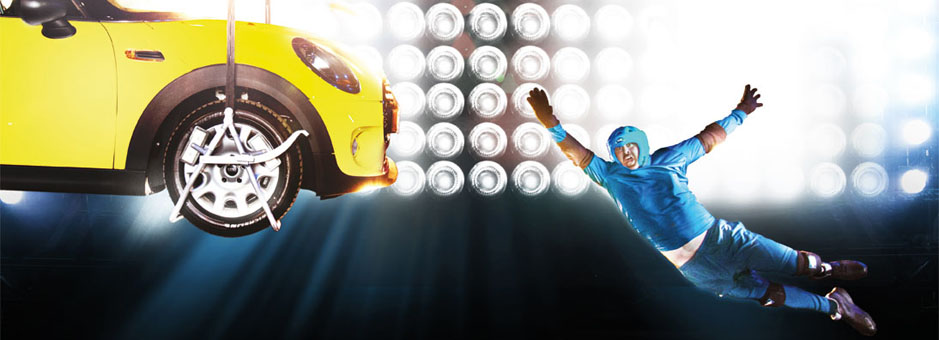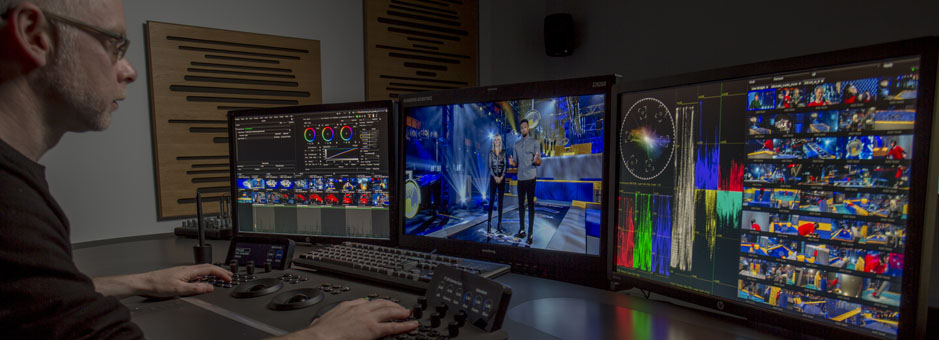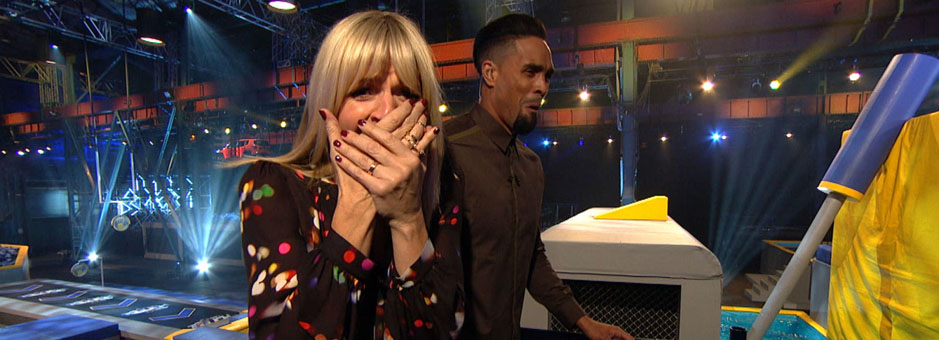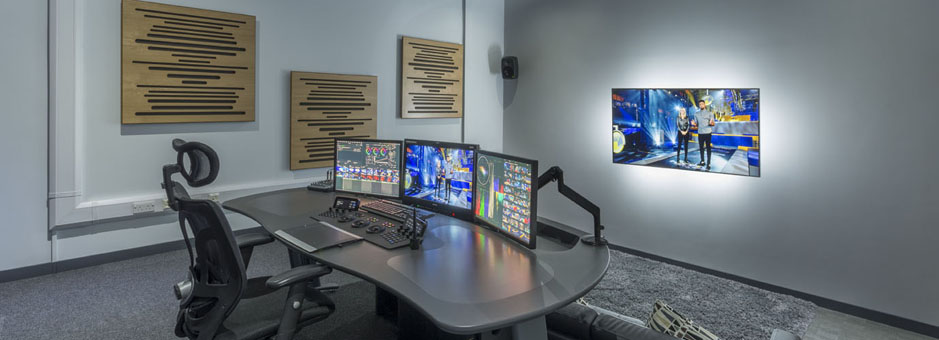Baselight Ka-booms in Belfast
Rapidly growing post house adds Baselight grading suite for new BBC broadcast project, Can’t Touch This
Belfast, in Northern Ireland, doesn’t have a great history in post-production. But Ka-boom, which started in 2010 as an audio facility, the specialisation of co-founder Will McConnell, quickly grew to fill the void in a city which is now rapidly becoming a major production centre.
The first progression for Ka-boom was into picture editing, with the installation of a number of Avid editing suites. Early on the company recognised that they needed more than the basic colour tools provided in editing software, so they invested in Baselight Editions. This plugin puts the full Baselight grading toolset into the Avid environment, allowing the editor to take more creative colour control as well as open up the possibility of a fluid and flexible exchange of grades between editors and colourists.
This proved so successful that Ka-boom soon decided to invest in a full grading suite. They installed a Baselight ONE with Slate control panel, housed in a room built by one of FilmLight’s distribution partners, Tyrell, who are also Ka-boom’s regular and long standing systems integrator.
“We used Baselight for Avid for about 14 months before the full system went in,” explained co-founder Zach Willis. “It gave us a good understanding of how the system works, so it was seamless when we put in the full Baselight system – nothing was alien to our colourist and he could instantly start work.
“The team at FilmLight finished the installation on a Friday night, and on the Monday morning we were grading a BBC Scotland show,” he added. “We got great support from FilmLight, and because of Baselight Editions we could jump straight into grading a documentary. And the system has not been idle since.”
As well as work for various parts of the BBC, the facility and its Baselight suite have been busy with work from further afield, including a five-part series for Al Jazeera and the RTS award winning Channel 4 series, Dispatches. Ka-boom also posted some short films, working in 2K rather than HD and delivering DCPs, directly output from Baselight.
The biggest project came in 2015 when Belfast indie production company Stellify Media won a huge entertainment contract from the BBC, and was keen to keep the whole project produced and finalised in Northern Ireland. Ka-boom demonstrated it could handle the complete post – including grading – and in turn won the project.
Can’t Touch This is a Saturday night primetime game show, involving the biggest set the BBC has ever constructed – about 40,000 square feet and involving a platform six metres off the ground. The simple objective is if you touch a prize you win it – but you have to cross a massive obstacle course to reach the prizes. The commissioners wanted something big, bold and exciting.
The 10 x 60-minute series was shot using a 12-camera outside broadcast truck. There were also a number of fixed rig cameras, mainly GoPros, and three super slow motion cameras. For each day’s shooting Ka-boom was ingesting around four terabytes overnight, ready for the next day’s work.
Ka-boom provided three edit suites, with each editor working on a separate show. All the raw content was transcoded to DNxHD at 120 Mb/s. And, because the Avids were running Baselight Editions, Ka-boom could set up a render-free workflow for Can’t Touch This to maximise efficiency, quality and creativity.
An episode would stay in the Avid suite until first picture lock, then be handed over to the colourist. The requirement for the show was that it had to be larger than life, so the colourist had the freedom to use the Baselight toolset to create a bold, striking look. The Baselight architecture meant that all grading was done on the original full resolution rushes in the Baselight suite and that the grades would be captured as metadata.
Once the grade was complete it was published as a new Avid AAF, and the producers and executive producers could review the show in the master editing suite. Because this also included the Baselight for Avid plugin, if there was anything that needed fine adjustment it could be done there and then.
“This was one of the big pluses for Baselight versus anything else,” said Ka-boom’s Zach Willis. “You never have to round trip, you never need to get the colourist to break off from what he is doing. The colourist could be grading away in the Baselight suite and the editor could be reviewing in the online suite, tweaking in Baselight Editions. That is why we chose this workflow, and that is why we chose Baselight.
“With the full Baselight ONE system, Editions and the render-free workflow, all barriers are lifted,” he added. “Our clients have noticed this, too. They can see right away the flexibility we have and efficiency we can deliver. We’re spending the same amount of time with clients but they’re getting a better product. We can spend more time being creative and delivering the best picture.
“When we were looking at grading systems we felt that FilmLight came with the reputation of being number one,” Willis concluded. “Clients locally and internationally now see us as the place to finish big projects. Being located in Northern Ireland is not a barrier. When people see we have a Baselight system and what colourist Jim Agnew can do with it, they can see that anything is possible. Wherever your imagination can take you, Baselight goes with you on that journey.”
“When people see we have a Baselight system and what Jim Agnew can do with it, they can see that anything is possible.
Wherever your imagination can take you, Baselight goes with you.”
Download








